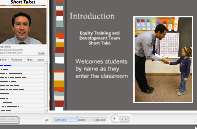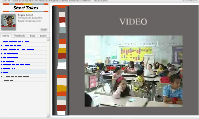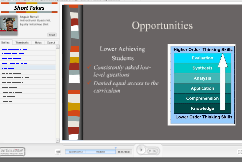 MONTGOMERY COUNTY PUBLIC SCHOOLS
MONTGOMERY COUNTY PUBLIC SCHOOLS
 MONTGOMERY COUNTY PUBLIC SCHOOLS
MONTGOMERY COUNTY PUBLIC SCHOOLS
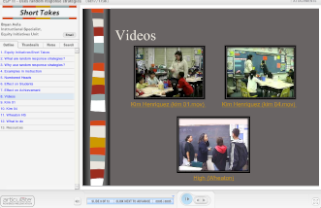 Practice 11: Uses random response strategies
Practice 11: Uses random response strategies“The teacher’s positive attention toward students results in positive academic changes. Hispanic students’ grades improved more than 10 % per year when students were given equal opportunity to respond and received individual help. Schoolwork turned in by students increased 15 % as a result of having equitable opportunities to respond in class (Bartley, et al, 1999).”
Los Angeles County Office of Education. (2002). Teacher Expectations Student Achievement (TESA): A staff development program for all teachers, coordinators manual. Downy, CA: Los Angeles County Office of Education. p. D-1.
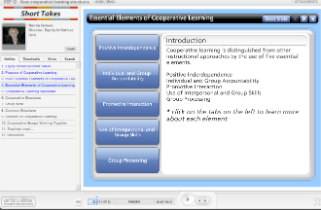 ECP 12: Uses cooperative learning structures
ECP 12: Uses cooperative learning structures“Much of the information about different cultural and ethnic heritages cannot be attained through reading books. Only through knowing, working with, and personal interactions with members of diverse groups can students really learn to value diversity, utilize it for creative problem solving, and develop an ability to work effectively with diverse peers. While information alone helps, it is only through direct and personal interaction among diverse individuals who develop personal as well as professional relationships with each other that such outcomes are realized.”
Johnson, D. W., & Johnson, R. T. (2008). Cooperative learning, values and culturally plural classrooms. Retrieved January 2008, from Cooperative Learning Center University of Minnesota website: http://www.co-operation.org/index.html
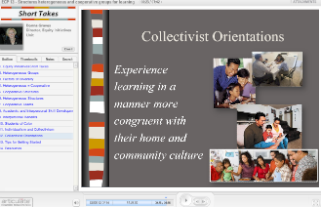 ECP 13: Structures heterogeneous and cooperative groups for learning
ECP 13: Structures heterogeneous and cooperative groups for learning“Because cooperative learning groups encourage positive social interaction among students of diverse racial and ethnic backgrounds, they have great potential to facilitate the building of cross-ethnic friendships and to reduce racial stereotyping, discrimination, and prejudice. When students work cooperatively, they have the opportunity to judge each other on merits rather than stereotypes (McLemore & Romo, 1998).”
Cooper, R. and Slavin, R. (Winter, 1999). Improving intergroup relations: Lessons learned from cooperative learning programs. Journal of Social Issues. Retrieved December 2008 http://findarticles.com/p/articles/mi_m0341/is_4_55/ai_62521561/pg_3?tag=content;col1
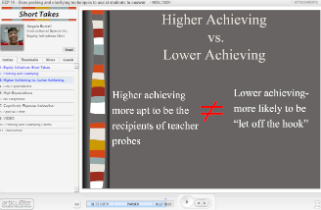 ECP 14: Uses probing and clarifying techniques to assist students to answer
ECP 14: Uses probing and clarifying techniques to assist students to answer“Probe questions should reflect different levels of cognitive complexity. …The questions at each level of cognitive complexity can vary in the demand they place on English language proficiency. . . . Thus, students can be assessed for their ability to respond to higher order questions even though they may have minimal skills in English.”
O’Malley, M. J., & Valdez Pierce, L. (Spring 1992). Performance and portfolio assessment for language minority students. NCBE Programs Information Guide Series, Number 9.
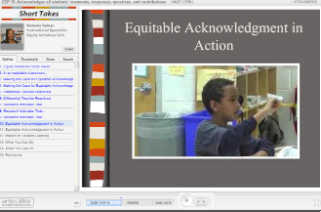 ECP 15: Acknowledges all students’ comments, responses, questions, and contributions
ECP 15: Acknowledges all students’ comments, responses, questions, and contributions“Shade cites research that ties . . . differential treatment to the race of the student: ‘In schools when Anglo-European children ask questions, explore, and touch, the teachers see them as gifted and smart; however, when African American children demonstrate this behavior, they are perceived as disrespectful and as having behavioral problems. . . . Research studies have found that even if the [African American] children have been identified as gifted, teachers are more likely to give them less attention, less praise, and more negative responses.’
Equity Training and Development Team. (2008). The classroom is a sea of communication . . . Retrieved November 2008, from MCPS website: https://www.montgomeryschoolsmd.org/departments/development/teams/diversity/diversity.shtm
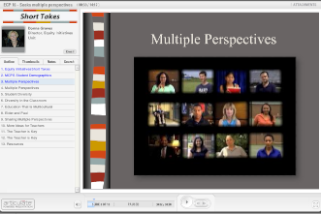 ECP 16: Seeks multiple perspectives
ECP 16: Seeks multiple perspectives“In the critical-thinking sense of the term students with perspective expose questionable and unexamined assumptions, conclusions and implications. When a student has or can gain perspective, she can gain a critical distance from the habitual or knee-jerk beliefs, feelings, theories, and appeals that characterize less careful and circumspect thinkers.”
Wiggins, G. & Mctighe, J. (2005). Understanding by design. Alexandria, Virginia: ASCD. p. 53.
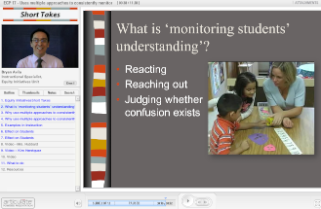 ECP 17: Uses multiple approaches to consistently monitor students’ understanding of instruction, directions, procedures, processes, questions, and content
ECP 17: Uses multiple approaches to consistently monitor students’ understanding of instruction, directions, procedures, processes, questions, and content“One irrefutable fact about learning is when students achieve at levels commensurate with potential, their culture figures prominently in the process. The influence of culture on cognition must never be overlooked. Those teachers who devise creative strategies for taking full advantage of what students already know are also committed to seeking information about how they live.”
Brown, T. J. (1988). High impact teaching: Strategies for educating minority youth. Lanham, Maryland: University Press. p. 26.
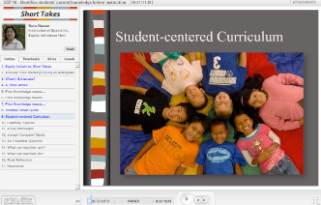 ECP 18: Identifies students’ current knowledge before instruction
ECP 18: Identifies students’ current knowledge before instruction“By taking full advantage of what each student already knows the learning experience is enhanced for all. When strategies…are utilized by teachers, education that is truly multicultural takes place. Learning outcomes for all students are increased, and their appreciation for cultural differences is easily discernible.”
Brown, T. J. (1988). High impact teaching: Strategies for educating minority youth. Lanham, MD: University Press. pp. 44–45.
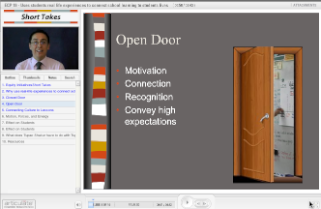 ECP 19: Uses students’ real life experiences to connect school learning to students’ lives
ECP 19: Uses students’ real life experiences to connect school learning to students’ lives“If minority students are to enjoy the benefits that should accrue from schooling, their culture must figure prominently in the process.”
Brown, T. (1999). Teaching the poor and children of color. Columbia, MD: Brown & Associates. p. 66.
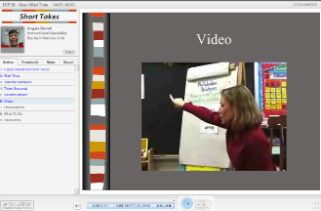 ECP 20: Uses Wait Time
ECP 20: Uses Wait Time“Marzano advocates that teachers develop a repertoire of possible responses to students to ensure equitable treatment of all. His specific suggestions include: . . .
Equity Training and Development Team. (2008). The classroom is a sea of communication . . . . Retrieved November 2008, from MCPS website: https://www.montgomeryschoolsmd.org/departments/development/teams/diversity/diversity.shtm
